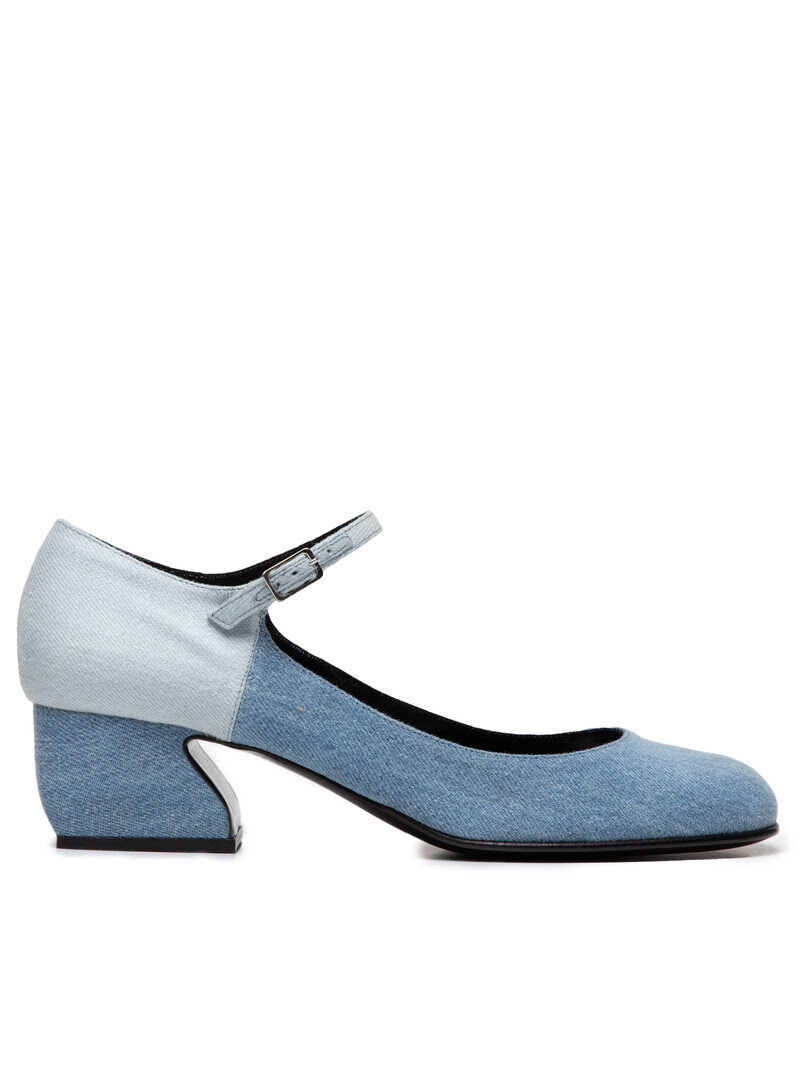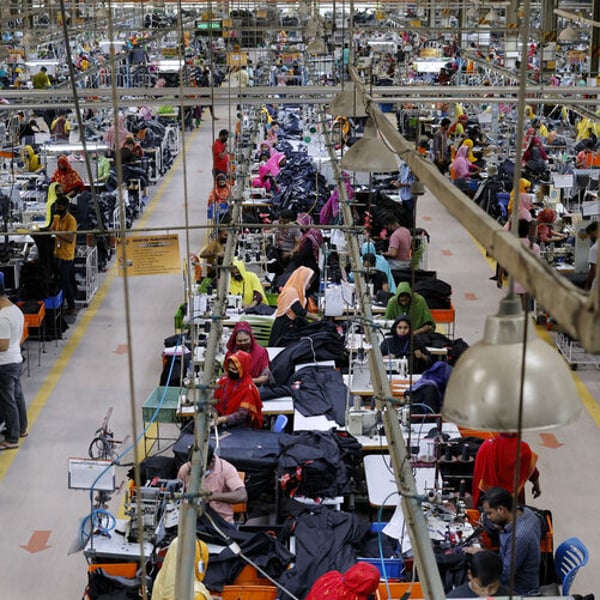Liberation or decimation? While the 47th President of the United States is often seen as mercurial in his decision-making and penchant for threats, Donald Trump made good on a promise to impose further tariffs, this time mainly reciprocal to U.S. trade partners.
In the first 48 hours of the announcement, stocks plummeted, and affected countries, including the EU and China, slapped back with promises and even actions to do the same. The consensus among economists—who have warned that tariffs could end up causing a global recession—is that consumer prices for produce, clothing, electronics, cars, and many other goods will rise.

President Trump claims this extreme action is needed to bring manufacturing and related jobs back to the U.S. (though tariffs will negatively affect factories and jobs like those of foreign carmakers, such as Hyundai, who already operate in the U.S., punishing existing compliance with said goals).
Economic pundits and journalists have blown holes in Trump’s theory and claims, according to the Washington Post, most of his understanding of tariffs is incorrect, and the President’s claim of bringing in hundreds of millions of dollars from China during the tariffs in his first term was closer to $75 million, of which $28 million went to bail out the U.S. farmers affected; he also claims NAFTA resulted in the U.S. losing 90,000 factories, another figure the result of Trump’s exaggeration.
In this round of tariffs, Canada and Mexico are not included, despite being maligned by the President just weeks ago as “bad faith actors” who hugely benefit from the U.S., leading some analysts to posit that he is using backroad attempts to build and rely on existing manufacturing and trading with the neighbors to the North and South.
Economists said tariffs will likely raise prices consumers pay for produce, clothing, electronics, cars, and other goods. Thus, while the fashion industry has been bracing for a second round, having been primarily affected by 301 China tariff initiated in 2018, the guaranteed extra costs couldn’t come at a worse time, especially with a downturn in luxury, rising costs in general, and many designers facing nonpayment issues resulting from the Saks takeover of Neiman Marcus Group.

FashionNetwork.com sat in on a webinar hosted by the Accessories Council featuring Peter W. Klestadt, Esq., partner at Grunfeld, Desiderio, Lebowitz, Silverman & Klestadt LLP, a law firm specializing in customs and international trade law, and reached out to several fashion industry executives and retail consultants, as well as brands to get their take on how the tariffs will affect business.
Klestadt spoke over Zoom to about 800 fashion, accessories, licensing, home goods, and manufacturing professionals on what to expect and suggestions for how the tariffs might be managed or mitigated. He began by pointing out some key dates, respectively, April 5 and April 9, as the former is a 10 percent tariff on all goods from all countries, with the latter additional tariffs such as a 34 percent tariff on goods from China and 20 percent on goods from the EU, among others Trump declared as “bad actors” on trade.
Exemptions for any goods “on a vessel” and in transit by these dates are not subject to the tariffs (though if they pass through Canada via truck after coming ashore there, they may be.) Klestadt demonstrated, given existing tariffs, some that date back to 2018 along with newer ones such as the reciprocal tariffs, for a country like China, which is currently set to be subjected to an additional 34 percent, how steep this could be with a formula: 5.5 percent + 7.5 percent + 20 percent + 34 percent = 67 percent. In theory, if a piece of jewelry made in China that would typically cost $100 was imported, if the total tariff amount is passed on to the consumer, that jewelry now costs $167.
Klestadt also pointed out that Trump’s actions will do away with ‘de minimis,’ which allows single pack shipments of $800 or less to enter tax-free—think Shein, Temu, and other online retailers who ship goods to the U.S. frequently and the duty-free exemption at the airport.

The customs and trade lawyer offered several complex scenarios in which companies might effectively lower the amount paid in tariffs for finished products and components ranging from transaction restructuring to reduce customs value, unbundling aspects of goods that pertain to non-tangible costs such as planning and strategy; paying close attention and finding solutions to the Country-of-Origin clause; using bonded warehouses to defer importing and drawbacks which can result in refunds based on when it is exported. He also pointed out that exemptions granted during the 301 tariffs will expire on May 31 and show no sign of being renewed.
Key figures in the apparel sector also spoke out to the industry following the “Liberation Day” tariff announcements.
CFDA
“The Council of Fashion Designers of America (CFDA) is concerned about President Trump’s recently announced “Liberation Day” tariffs. If implemented as planned in the coming days, these trade measures will significantly impact American fashion businesses, especially independent designers and small brands that rely on global supply chains to produce and distribute their collections.
“The proposed tariffs will drive costs, disrupt sourcing and production schedules, and diminish American fashion’s competitiveness in the global marketplace.

“While we support efforts to strengthen domestic manufacturing, such policies must be balanced with the realities of today’s interconnected industry. American fashion thrives on creativity, innovation, and a global network of partners. We urge policymakers to consider the impact of these measures and engage with industry leaders in developing solutions that foster long-term growth for U.S.-based designers.”
Gary Wassner of Hilldun
“Most brands that manufacture primarily in China have spent the last few years attempting to diversify their supply chain. Vietnam, Bangladesh and India are countries brands were trying to migrate to. These tariffs undermine that progress in diversification. Prices will increase on all apparel, from Walmart T-shirts to LVMH handbags. Luxury already feels the impact of precipitous price increases, and so will consumers in every income bracket, especially the lowest incomes. Tariffs don’t discriminate on the price of apparel they apply to.
“Retail in the U.S. has been struggling as well. Higher prices at retail cause concern and confusion on the part of the consumer, lowering confidence and hence the likelihood that their apparel spend will increase, resulting in pressure on the cash flows of major department store chains across luxury, mass market, fast fashion, or discount.
“The brands I speak to daily anticipated this and have been adjusting prices, negotiating with suppliers, and figuring out how to handle the upcoming season. From now until September, merchandise shipping has already been sold based on pre-tariffed costs. Now that merchandise costs so much more than brands figured into their margins, raising prices now is not an option.
“Every store would have to agree since full-price prices are identical for each one. Bloomingdale’s can’t sell a Gucci shirt for 20 percent less than Saks when the merch first hits the sales floor. Brands will absorb the cost of the tariffs, at least for the next two quarters. Manufacturers overseas will be barraged with demands to reduce prices, with larger brands having more bargaining power. As usual, the small, independent companies will suffer the most when they can usually afford it the least.

“From our perspective as lenders, lower margins mean less profit and more cash flow issues. We’ve worked with clients in times of crisis. During Covid, we did everything to mitigate the huge drops in revenue. Each client is different and has different needs. We are sensitive to those needs and will continue to do so. The interest we charge to borrowers is directly tied to the prime rate. Our rates go up and down automatically when the prime rate changes. We have no intention of increasing the interest rates we charge as long as the prime rate does not go up. “
Robert Burke, retail consultant and chairman & CEO of Robert Burke Associates
“The tariffs will significantly affect all brands, especially U.S. brands using Chinese and European materials and components, and these costs will be passed on to the consumer across the board. Unfortunately, price increases could be 20 to 25 percent.
“It will be challenging as retail has been difficult without these tariffs. The products in the stores now would remain the same. I don’t believe they’re going to be increasing those. The bigger question is what this does to the brands, big and small, and ultimately, the chance it affects the amount the customer buys or shopping frequency. It will be a significant obstacle. Who knows if these things will go through with Trump, he could change them. He’s done it before, and the announcement of these tariffs created enormous backlash.”
Paul Andrew, founder of Paul Andrew, current creative director of Sergio Rossi
“It’s early to make predictions, but the market reactions are already a signal that this will be generally quite disruptive. With Paul Andrew, we are always conscious of price architecture and did not benchmark ourselves with bigger brands following recent price inflation trends. Now, when there will be great scrutiny on price, that approach puts us in a relatively favorable place. Independent brands will feel the pinch, but I remain confident we will find solutions with our supplier network and avoid having to pass on the entirety of the cost to the customer.”

Juan Pellerano-Rendon, Swap e-commerce OS system, chief marketing officer
“Based on our study of 100 U.S. brands, 83 percent of executives said that regulatory shifts could threaten their business’s survival. They plan to pass on an average of 34 percent of increasing costs due to tariffs to customers while engaging in mitigation strategies, including shifting to domestic supply channels (56 percent), shifting price strategies (55 percent), bundling services (39 percent), and buying surplus inventory ahead of tariffs (31 percent).
Swap has seen an increase of 20 percent in new deals 24 hours after Trump announced his latest tariff proposal. Swap Inventory, a new offering connecting the dots across Swap’s products and the merchant journey, providing its customers with sophisticated pricing modeling and smart AI-driven recommendations around restocking and replenishment.
Most brands work with multiple solutions that don’t communicate or integrate seamlessly. Thus, brands likely use separate inventory, returns, and cross-border tools, requiring them to understand what the different tools tell them.
While tariffs go into effect immediately, consumers may not immediately feel the full impact. It will likely be a phased process, first hitting newly imported goods and later affecting future product lines with fully baked-in tariff costs.”
Mila Garcia, CEO of Spanish shoe brand Pedro Garcia
“Tariffs are naturally of great concern for our family-owned company as we are talking about an extra 20 percent applicable as early as next week. We are confident that the EU’s response and the negotiations with the U.S. will change the outlook. As it stands now, it is a major hit that will inevitably impact the product prices in the U.S.”

Guido Conti Caponi, COO of Loretta Caponi
“This is the first time we have dealt with tariffs since starting to wholesale our garments eight years ago. However, certain fibers already had a 25 percent tariff applied. Others, like specific blends of polyester, had 37 percent. These additional tariffs introduce an entirely new scenario, the consequences of which are still hard to predict.”
“We will continue to do our best to mitigate the increase of the prices away from final consumers; we care for our North American customers and distribution, despite the huge increase of general costs of fabrics and energy. We lowered margins, balancing healthy sustainability, profitability, and reasonable prices. Being a small family-run business made in Italy, it won’t be easy. We just started offering landed door-to-door prices to our retailers to help them import our Made-in-Italy products.”
Katherine Melchior Ray, co-author of “Brand Global, Adapt Local: How to Build Brand Value Across Cultures”
“Brands with healthy pricing margins may be able to absorb part of the tariff impact without fully passing it to consumers entirely. Those with low-profit margins, like grocery products, won’t. Pricing flexibility across assorted products offers opportunity. Savvy brands can shift the burden toward higher-margin products or those with less tariff exposure, such as entry-level price points, to encourage customer acquisition. Meanwhile, unique, iconic, or high-demand products may be better positioned to increase prices without eroding loyalty.
“Brands can adjust pricing depending on adaptable supply chains. If a company owns overseas factories, it can profit at the factory and retail level, with room for flexible pricing. Pivoting to domestic production may reduce or eliminate tariff impact. More than a cost-saving maneuver, it can become a brand-building opportunity for “Made in the U.S.” and sustainable local sourcing appeal. Brands with strong awareness perceived quality, and loyalty offer protection during economic downturns and protection for premium pricing. Loyal consumers tolerate moderate price increases if they believe the brand continues to deliver consistent value. This is the moment for brands to over-communicate and invest in customer relationship marketing. Transparency about why prices are rising—paired with heightened customer service, personalized experiences, and loyalty program incentives—can soften the blow.

“Existing import duties already affect comparison pricing. Global price parity is more of an aspiration than rule, varying by category. In fashion, tariff impacts depend on more than currency conversion or tax rates: regional supply chain costs, local competition, and perceived value by market shape pricing decisions.
“Take Zara, a Spanish brand manufactured in countries like India, Bangladesh, Turkey, and China. The tariff burden on a product depends on its country of origin. A 40-euro top might land in the U.S. with a higher price tag, but the calculation is more complex than a simple currency conversion plus tariff.
“Here’s how it works: tariffs are assessed on the imported wholesale price, not the retail price. Retailers who buy from third-party wholesalers usually mark up clothing by 100 percent, so a $20 shirt at wholesale usually sells for $40 in the U.S. The Trump tariffs assessed 20 percent on Spanish imports, which would add $4 to the $20 wholesale price. If the retailer seeks to hold its margin, it will charge the customer $44, receive its $20 margin, and pay U.S. Customs $4.
“This gets complicated because products come from various countries with different tariffs. If the top comes from Bangladesh with a new 37 percent tariff, the tariff is $7.40; holding the same retail margin would create a new retail price of $47.40.”
Copyright © 2025 FashionNetwork.com All rights reserved.




